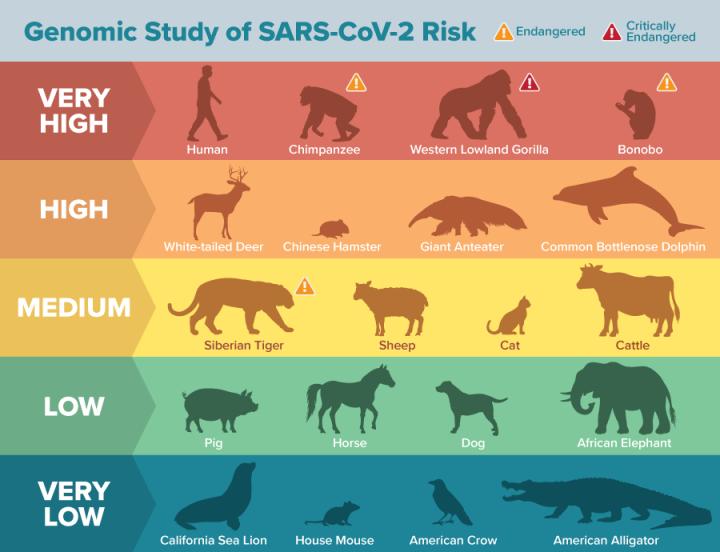Humans have long been fascinated by our connection to the animal kingdom. The question "What animal are humans most related to?" has intrigued scientists and the general public alike. Advances in genetics, evolutionary biology, and anthropology have shed light on our place in nature, revealing surprising and insightful connections to other species.

This article dives deep into the evolutionary relationships between humans and animals, uncovering the closest living relatives and how our shared ancestry reveals much about who we are today.
The short answer to the question is that humans are most closely related to chimpanzees and bonobos. These two species of great apes share about 98.7% of their DNA with humans, making them our closest living relatives in the animal kingdom.
The similarity in DNA between humans, chimpanzees, and bonobos has been confirmed through extensive genetic research. This shared DNA is a testament to the fact that all three species descend from a common ancestor that lived about 6-7 million years ago.
Beyond genetics, chimpanzees and bonobos also display many behaviors that are strikingly similar to those of humans. They are highly social animals that use tools, display complex emotions, communicate with each other, and even exhibit cultural differences within groups, such as using different methods to acquire food. Bonobos, in particular, are known for their peaceful social structures, which involve strong bonds and cooperation within their communities.
Humans did not evolve from chimpanzees or bonobos, but we do share a common ancestor with them. About 6-7 million years ago, this ancestor diverged into separate evolutionary paths, one leading to modern humans and the other to chimpanzees and bonobos. Over time, these paths evolved independently, giving rise to the differences we see today.
Human evolution is marked by significant changes, particularly in terms of brain development, bipedalism (walking on two legs), and tool use. Some of the key milestones in human evolution include:
Australopithecus: One of the earliest known hominins that walked on two legs but still had many ape-like features.
Homo habilis: Often called "the handyman," this species used simple stone tools.
Homo erectus: An early human species that migrated out of Africa and exhibited advanced tool-making abilities.
Homo sapiens: Modern humans, with advanced cognitive abilities, language, and culture.
While chimpanzees and bonobos are the closest, humans also share a significant amount of DNA with other animals. Here are some species that are closely related to humans:
Gorillas are another species of great ape and are our second-closest relatives, sharing about 98% of their DNA with humans. Gorillas are known for their strength, intelligence, and complex social structures.
Orangutans are part of the great ape family and share about 97% of their DNA with humans. These solitary primates are native to the rainforests of Borneo and Sumatra and are known for their remarkable problem-solving abilities.
Despite our close genetic relationships with chimpanzees, bonobos, gorillas, and orangutans, several key traits set humans apart from these species:
While great apes exhibit high levels of intelligence, humans have taken cognitive abilities to a new level. Our capacity for abstract thought, language, complex reasoning, and problem-solving is far beyond that of any other animal.
Humans have developed complex cultures, societies, and civilizations that are unique in the animal kingdom. While other primates have social structures and even some cultural traditions, human culture is far more intricate, encompassing art, religion, technology, and governance.
One of the most defining characteristics of humans is our ability to walk upright on two legs. Bipedalism allowed our ancestors to free their hands for tool use, which is thought to have been a key factor in our evolutionary success.
While some animals, such as chimpanzees and dolphins, can communicate using complex vocalizations and gestures, human language is vastly more sophisticated. We can convey abstract concepts, discuss future events, and pass on knowledge across generations.
Exploring our relationship to other animals, particularly our closest relatives in the great ape family, is important for several reasons:
Many of the species most closely related to humans, such as chimpanzees, bonobos, gorillas, and orangutans, are endangered due to habitat loss, poaching, and other human activities. Understanding our close genetic ties to these animals can foster empathy and support for conservation efforts to protect them.
Studying our animal relatives provides crucial insights into how humans evolved. By understanding the similarities and differences between us and other primates, scientists can learn more about what makes us uniquely human.
As we learn more about the intelligence, emotions, and social behaviors of other animals, particularly our closest relatives, questions arise about how we treat them. Many argue that our close relationship to great apes warrants stronger legal protections for these animals, particularly in terms of their use in research and captivity.
Humans are most closely related to chimpanzees and bonobos, sharing nearly 99% of our DNA with these intelligent and social animals. While we have evolved along different paths, our shared ancestry reveals much about our place in the natural world. By understanding these connections, we can gain valuable insights into human evolution, strengthen conservation efforts for endangered species, and better appreciate the rich diversity of life on Earth.
animal tags: People-and-Animals
We created this article in conjunction with AI technology, then made sure it was fact-checked and edited by a Animals Top editor.